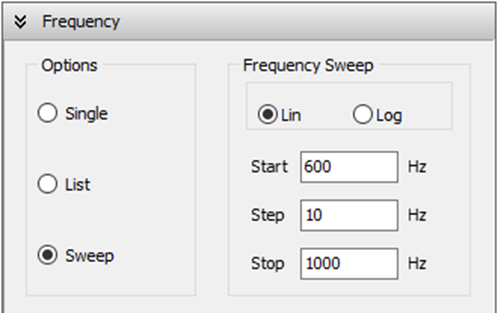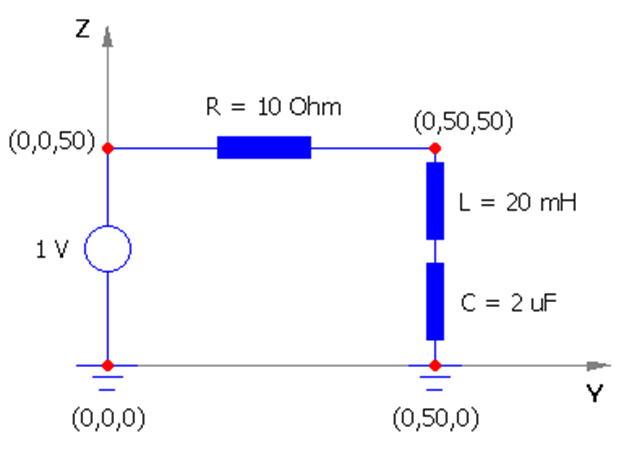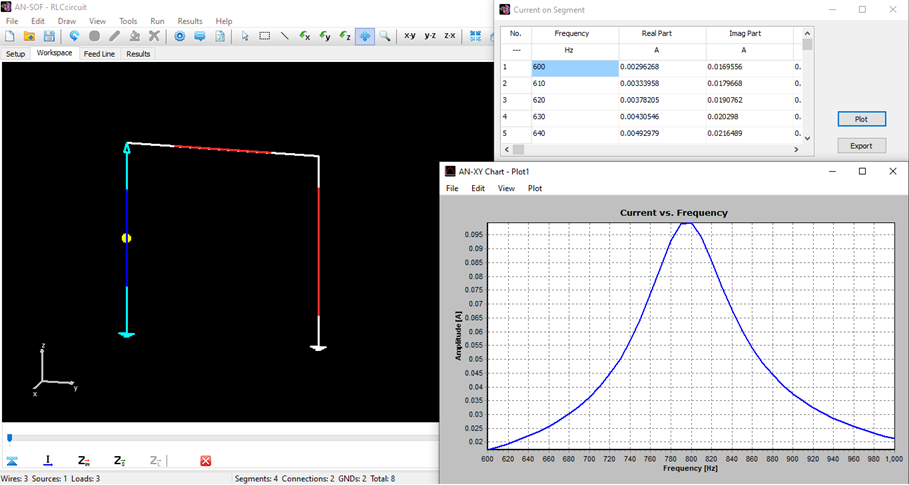Search for answers or browse our Knowledge Base.
Guides | Models | Validation | Blog
-
Guides
-
-
- Complete Workflow: Modeling, Feeding, and Tuning a 20m Band Dipole Antenna
- DIY Helix High Gain Directional Antenna: From Simulation to 3D Printing
- Evaluating EMF Compliance - Part 1: A Guide to Far-Field RF Exposure Assessments
- Design Guidelines for Skeleton Slot Antennas: A Simulation-Driven Approach
- Simplified Modeling for Microstrip Antennas on Ungrounded Dielectric Substrates: Accuracy Meets Simplicity
- Fast Modeling of a Monopole Supported by a Broadcast Tower
- Linking Log-Periodic Antenna Elements Using Transmission Lines
- Wave Matching Coefficient: Defining the Practical Near-Far Field Boundary
- AN-SOF Mastery: Adding Elevated Radials Quickly
- Enhancing Antenna Design: Project Merging in AN-SOF
- On the Modeling of Radio Masts
- The Equivalent Circuit of a Balun
- AN-SOF Antenna Simulation Best Practices: Checking and Correcting Model Errors
-
-
- AN-SOF 9: Taking Antenna Design Further with New Feeder and Tuner Calculators
- AN-SOF Antenna Simulation Software - Version 8.90 Release Notes
- AN-SOF 8.70: Enhancing Your Antenna Design Journey
- Introducing AN-SOF 8.50: Enhanced Antenna Design & Simulation Software
- Get Ready for the Next Level of Antenna Design: AN-SOF 8.50 is Coming Soon!
- Explore the Cutting-Edge World of AN-SOF Antenna Simulation Software!
- Upgrade to AN-SOF 8.20 - Unleash Your Potential
- AN-SOF 8: Elevating Antenna Simulation to the Next Level
- New Release: AN-SOF 7.90
- AN-SOF 7.80 is ready!
- New AN-SOF User Guide
- New Release: AN-SOF 7.50
- AN-SOF 7.20 is ready!
- New Release :: AN-SOF 7.10 ::
- AN-SOF 7.0 is Here!
- New Release :: AN-SOF 6.40 ::
- New Release :: AN-SOF 6.20 ::
- Show All Articles2 Collapse Articles
-
-
-
-
Models
-
- Modeling a Super J-Pole: A Look Inside a 5-Element Collinear Antenna
- Simulating the Ingenious Multiband Omnidirectional Dipole Antenna Design
- The Loop on Ground (LoG): A Compact Receiving Antenna with Directional Capabilities
- Precision Simulations with AN-SOF for Magnetic Loop Antennas
- Advantages of AN-SOF for Simulating 433 MHz Spring Helical Antennas for ISM & LoRa Applications
- Radio Mast Above Wire Screen
- Square Loop Antenna
- Receiving Loop Antenna
- Monopole Above Earth Ground
- Top-Loaded Short Monopole
- Half-Wave Dipole
- Folded Dipole
- Dipole Antenna
- The 5-in-1 J-Pole Antenna Solution for Multiband Communications
-
- Extended Double Zepp (EDZ): A Phased Array Solution for Directional Antenna Applications
- Transmission Line Feeding for Antennas: The Four-Square Array
- Log-Periodic Christmas Tree
- Enhancing VHF Performance: The Dual Reflector Moxon Antenna for 145 MHz
- Building a Compact High-Performance UHF Array with AN-SOF: A 4-Element Biquad Design
- Building a Beam: Modeling a 5-Element 2m Band Quad Array
- Broadside Dipole Array
- Log-Periodic Dipole Array
- Broadband Directional Antenna
- A Closer Look at the HF Skeleton Slot Antenna
- The 17m Band 2-Element Delta Loop Beam: A Compact, High-Gain Antenna for DX Enthusiasts
- Enhancing Satellite Links: The Moxon-Yagi Dual Band VHF/UHF Antenna
-
Validation
-
-
- Simple Dual Band Vertical Dipole for the 2m and 70cm Bands
- Linear Antenna Theory: Historical Approximations and Numerical Validation
- Validating Panel RBS Antenna with Dipole Radiators against IEC 62232
- Directivity of V Antennas
- Enhanced Methodology for Monopoles Above Radial Wire Ground Screens
- Dipole Gain and Radiation Resistance
- Convergence of the Dipole Input Impedance
- Impedance of Cylindrical Antennas
-
An RLC Circuit
The ability of AN-SOF to simulate at extremely low frequencies can be demonstrated with a model of an RLC circuit that will resonate at only 800 Hz, so the wavelength is 375 km!
Step 1 | Setup
Go to Tools > Preferences > in the main menu and select Hz, mm, mH and uF as the units for frequency, length, inductance, and capacitance, respectively. Then, go to the Setup tab and select Sweep in the Frequency panel >. Choose Lin for a linear sweep and set the Start, Step, and Stop frequencies. The frequency sweep will start at 600 Hz and end at 1,000 Hz, incrementing by 10 Hz for each calculation, Fig. 1. In the Environment panel >, set a perfect ground plane at Z = 0.


Step 2 | Draw
Go to the Workspace tab, right click on the screen, and select Line from the pop-up menu >. Draw the three wires with the coordinates indicated in Fig. 2 using the Line dialog box. The left vertical wire has 1 segment, the horizontal wire has 1 segment, and the right vertical wire has 2 segments. The wire radius is 0.5 mm.

Right click on the left vertical wire, select the Source/Load command from the pop-up menu and put a 1 Volt voltage source. Then, right click on the horizontal wire, select Source/Load from the pop-up menu and connect a load impedance with R = 10 Ohm. Finally, right click on the right vertical wire, select Source/Load from then pop-up menu and put an inductance L = 20 mH on the first segment and a capacitance C = 2 uF on the second segment. Refer to Adding Sources > and Adding Loads > for adding sources and load impedances.
Step 3 | Run
Go to the Run menu and click on the Run Currents command. Since we are only interested in the input impedance, it is not necessary to calculate the radiated field (you can do it to check that it is practically negligible).
Right click on any of the three wires composing the circuit, select the List Currents command and click on the Current on Segment button of the displayed toolbar >. A table will be shown, where the current is tabulated vs. frequency. Next, press the Plot button to the right of the table to plot the current versus frequency, Fig. 3.

Since this is a series RLC circuit, the current flowing must be the same in all three wires (check this). As can be seen, resonance occurs at a frequency near to 800 Hz. Repeat the calculation for frequencies around 800 Hz, with a step of 1 Hz, and verify that the resonant frequency is 796 Hz. On the other hand, according to circuit theory, the resonance frequency is given by

The agreement between AN-SOF and theory is remarkable!
